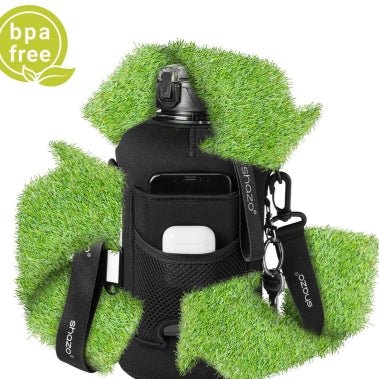A Battle between Cups and Ounces - Who Will Take Over?

Ever wonder how many ounces in a cup? It is one of those questions especially when one is cooking or baking which each one of us has. One should be very clear about the conversions related to measurement. Let us dive into it and clarify things for you to simplify stuff.
What is a Cup?

A cup is a measure of unit in cooking and baking. One U.S. Customary equals 8 fluid ounces. In metric ones usually this quantity differs but reaches around 250 milliliters. Knowing the kind of cup type used can help in executing a recipe correctly.
The difference between a U.S. cup and a metric cup can make a big difference in the final dish so always check which system your recipe uses!
Understanding Ounces
An ounce can be tricky for there are different types of them. You have:
- Fluid ounces
- Ounces by weight
Fluid ounces are a measure of volume for example how much space a liquid takes. Ounces by weight are units that express how heavy something is. So the 8 fluid ounces of water is different from the 8 ounces of flour in terms of capacity and weight.
"One cannot think well, love well, sleep well, if one has not dined well." - Virginia Woolf, an English Writer
Fluid ounces in comparison to simple ounces

Fluid ounces measure liquids as well as fluids and ounces are for dry measures. Because of this ounces are used when referring to weight while fluid ounces are used when referring to volume. This therefore implies that one should be concerned about what you are measuring from and not what you are measuring itself.
Conversion Factors
Knowing how to convert cups to ounces is sometimes quite helpful. Here is a quick reference chart for that:
| Cups | Fluid Ounces |
|---|---|
| 1/4 cup | 2 fluid ounces |
| 1/3 cup | 2.67 fluid ounces |
| 1/2 cup | 4 fluid ounces |
| 2/3 cup | 5.33 fluid ounces |
| 3/4 cup | 6 fluid ounces |
| 1 cup | 8 fluid ounces |
| 1 1/2 cups | 12 fluid ounces |
| 2 cups | 16 fluid ounces |
The table should allow you to quickly refer to the fluid ounce equivalents for some cup measurements.
Practical Examples

Let us take some practical examples now:
For this, think of water as 1 cup = 8 fluid ounces.

For the flour it is different. The flour is dry. So dry ounces to cups may vary.
For example 1 cup flour is about 4.5 ounces by weight.
What does it mean to the people?
Dry ounces to cups:
- Flour: 1 cup = 4.5 oz. by weight
- Sugar: 1 cup = 7 ounces by weight

Fluid ounces to cups:
- Water: 1 cup = 8 fluid ounces
- Milk: 1 cup = 8 fluid ounces

Did you know?
The U.S. gallon is smaller than the U.K. gallon. This means that very likely a measurement like a cup may differ a bit if you go by an international recipe.
Importance of Accurate Measurements

Measurements of ingredients in recipes are very intricate and an important factor in cooking. Too ample or too less of an ingredient ruins the dish. For example excess flour can make your cake dry. On the other hand a little less than required may render it too wet. Accurate measurements give you food just the way you want it. A little difference at this stage could totally result in a big difference at the end.
Tips for Measurement

Here are some tips to guide you to measure accurately:
- Liquid measuring cups are only for measuring liquids. And dry measuring cups for measuring solid foods.
- Level off the dry ingredients with a flat edge to make sure you are not using too much and no extra weight has been piled up like a heap above the cup’s storage capacity.
- Check measurement level when using a liquid measuring cup. Usually the levels are mentioned on the cups like a mark.
Pro Tip: Always sift your flour before measuring to ensure accurate volume; otherwise, you will end up using a little too much.
Wrapping up
So there you have it—how many ounces in a cup? The most often-remembered cooking tip may be that precise measurements hold the secret to perfect recipes. Whether you are measuring dry or fluid ounces into cups rest assured that proper tools and conversions can guide you well on your cooking and baking exploits.
"A recipe has no soul. You, as the cook, must bring soul to the recipe." - Thomas Keller, an American chef, restaurateur, and cookbook author
Knowledge of measurements in cooking and baking can certainly move your kitchen and cooking related skills up a notch. Knowing how many ounces are in a cup can let you have results that turn out right and are mouthwateringly good each time. So whether you are a beginner cook or a practiced and skillful chef these tips and insights will direct you through all your adventures in the kitchen.
Answers for you
How many ounces are in a dry cup?
It all depends on the ingredients. Take flour as an example. 1 cup of flour that is a dry food of course is about 4.5 ounces by weight.


